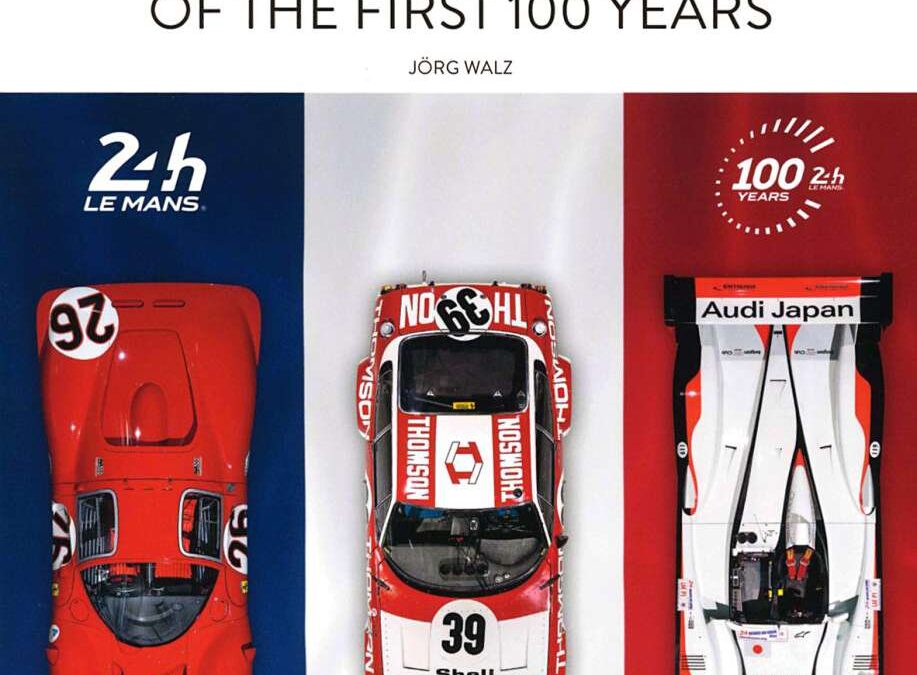
The 24 Hours of Le Mans is the most famous car race in the world, and the venue has long since established itself as the Mecca of the sports car scene. Numerous brands established their sporting reputation here. A selection of the impressive racing cars is on display at the national car museum The Loh Collection in a special exhibition to mark the 100th anniversary of Le Mans. Jörg Walz has used this collection to describe “highlights”. The race, the people behind the successes (and failures) and the many different vehicles provide plenty of material for exciting and interesting stories. This book tells some of them and traces the lively history of this event steeped in tradition
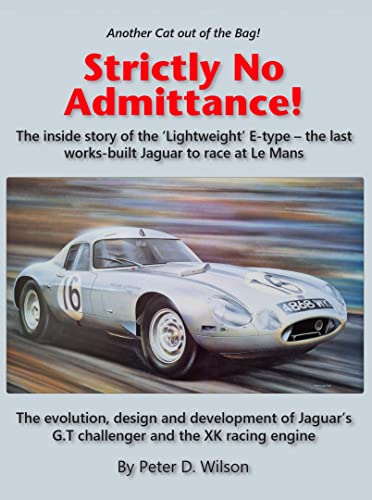
This impressive, large format book tells the inside story of the ‘Lightweight’ E-types. Built just in 1963, they are now amongst the rarest and most desirable of the race cars which came from Jaguar’s famous Competition Department – to which indeed there was ‘Strictly No Admittance’ for ordinary mortals! The book covers the evolution, design and development of Jaguar’s G.T. challenger and its XK racing engine. It is written by automotive engineer Peter Wilson who himself worked in the Competition Department throughout the period, where, together with his colleagues, helped build, and develop the production E-type through to its final form – the highly competitive and successful ‘Lightweight’ E-type. Peter’s remarkable recall of those events 60 or more years ago is reinforced by the hundreds of hours he spent in the Jaguar Daimler Heritage Trust’s impressive archives, and by many conversations with his former colleagues at Jaguar. The result is a book of astonishing detail (every single engine ever used by the factory in Lightweight E-types is, for example, identified and fully documented), while Peter’s account of how the car evolved from previous models, and the technicalities of how the engine, transmissions, brakes and bodywork were built and developed, are recorded in unprecedented detail. “The Lightweight E-type was created under the aegis of Jaguar’s founder, Sir William Lyons, and his engineering director William Heynes CBE”, writes publisher Paul Skilleter. “But the cars needed to be built and maintained, and Peter takes us into that ‘holy of holies’ and introduces us to the men who created the Lightweight E-type ‘in the metal’. “However, in successfully persuading Peter Wilson to follow up his XJ13 book with one on the Lightweight E-type, I hadn’t realised what I had let myself in for… The sheer quantity of words, graphs, diagrams and pictures which Peter presented me with was breathtaking – as was also the huge depth of the research clearly
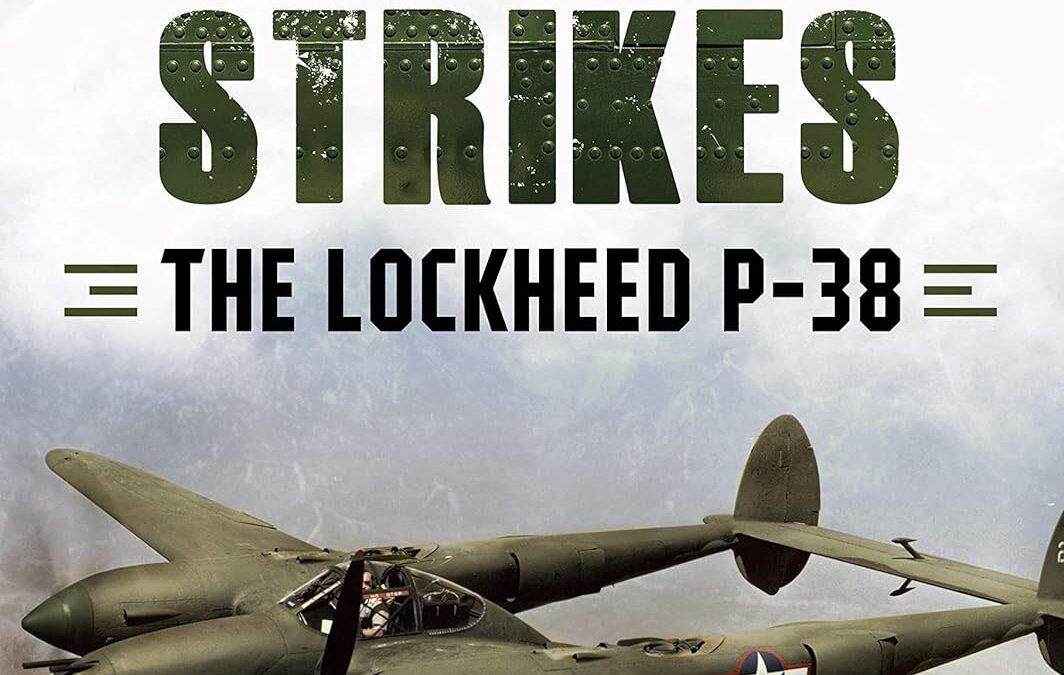
Lightning Strikes—The Lockheed P-38 tells the full story of one of the most successful and versatile aircraft of the Second World War. The P-38 (including its F-4 and F-5 photo reconnaissance models) eventually served with all the USAAF’s numbered overseas air forces, from early 1942 to VJ Day. The book describes the Lightning’s design and its technical details as it gradually evolved and improved, from the original XP-38 to its final variant, the P-38L-5. The main focus is on its service in the combat theaters, from the frigid, windswept Aleutian Islands in the North Pacific to the steaming jungles of the South Pacific and Southeast Asia, the burning sands of North Africa and the more temperate climes of Europe. All the units that flew the Lightning are included, as are the experiences of many of their pilots and ground crewmen as they fought the Japanese Empire and the European Axis. Also related are the P-38’s service with foreign (non-U.S.) air forces, its postwar commercial utilization as civilian aircraft and the surviving examples in museums around the world. The book is extremely well illustrated with nearly 400 high-resolution photographs, artworks, and graphics, and is supplemented by detailed appendices.
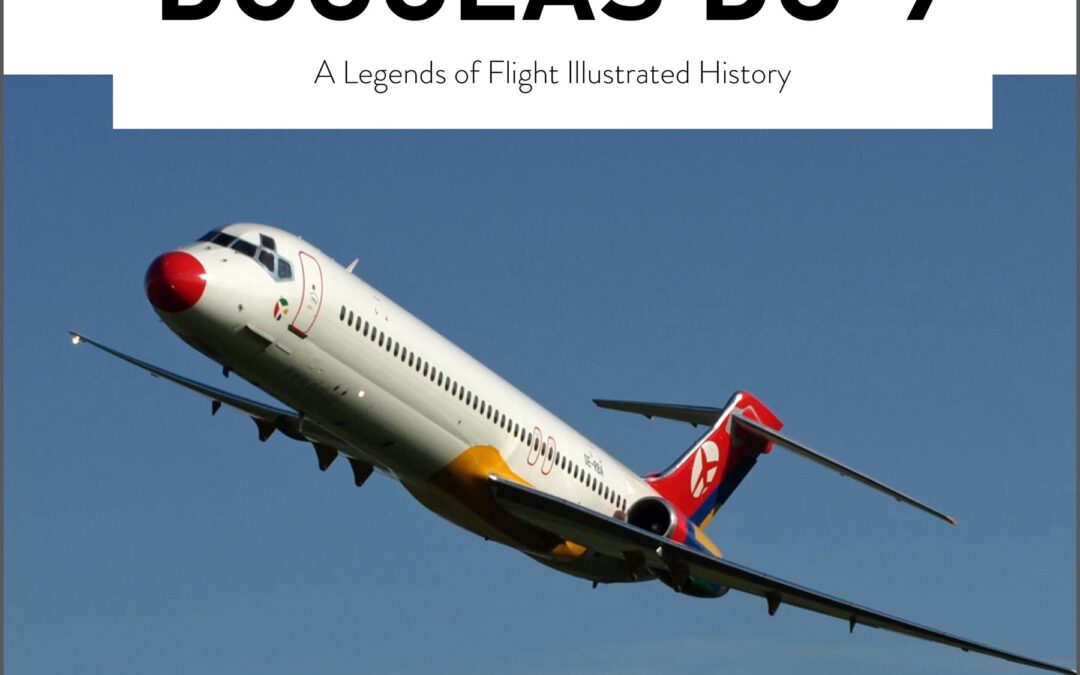
With their unmistakable silhouette, the Douglas DC-9 family of twin-engine passenger jets was a familiar sight on many of the world’s airfields well into the 1990s. Douglas initiated development of the DC-9 at the beginning of the 1960s and, in doing so, developed an entirely new market—the short-range jet airliner. The DC-9 became an instant bestseller for Douglas. To this day, the DC-9, and its MD-80 and -90 variants, are among the most successful passenger airliners ever produced, with nearly 1,000 examples being produced from 1965 to 1982. In this book you will learn everything from the first designs to its gradual elimination from the market by more-modern designs from Airbus and Boeing. The history of the DC-9’s design, development, and operational use is presented in detail in this book, as is its use by many of the world’s most famous airlines, including Delta, Eastern, TWA, USAir, Air Canada, Swissair, Finnair, KLM, and Qantas. Technical specifications for the DC-9 and its variants, as well as period photographs, bring to life the fascinating history of Douglas’s most successful commercial jet airliner.
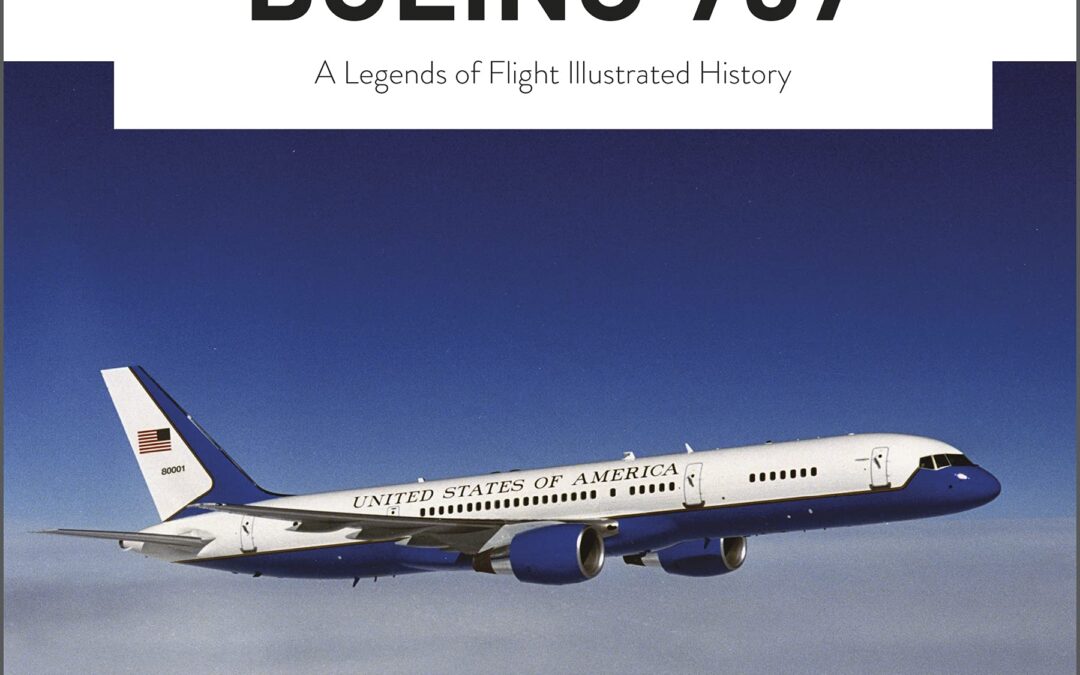
First flown in 1982, the Boeing 757 was an impressive accomplishment. The aircraft was fast, quiet, and fuel efficient while still exhibiting stellar takeoff, climb, and landing performance. Hear firsthand accounts from the leaders of the 757 program who skillfully established an extraordinary culture within their organization. This team, empowered by the program’s expert guidance, overcame the challenges of producing a new aircraft type in an environment that was fast paced and unforgiving. It was originally designed as a domestic aircraft, and the 757’s performance, along with the advent of twin-engine overwater authorizations, led it to become one of the primary aircraft conducting long-range overwater operations. To place the reader in the pilot’s seat, a technical chapter is also included, describing the airplane’s systems and actual handling of the airplane. Learn about this special aircraft and the people who designed, built, marketed, and flew it.
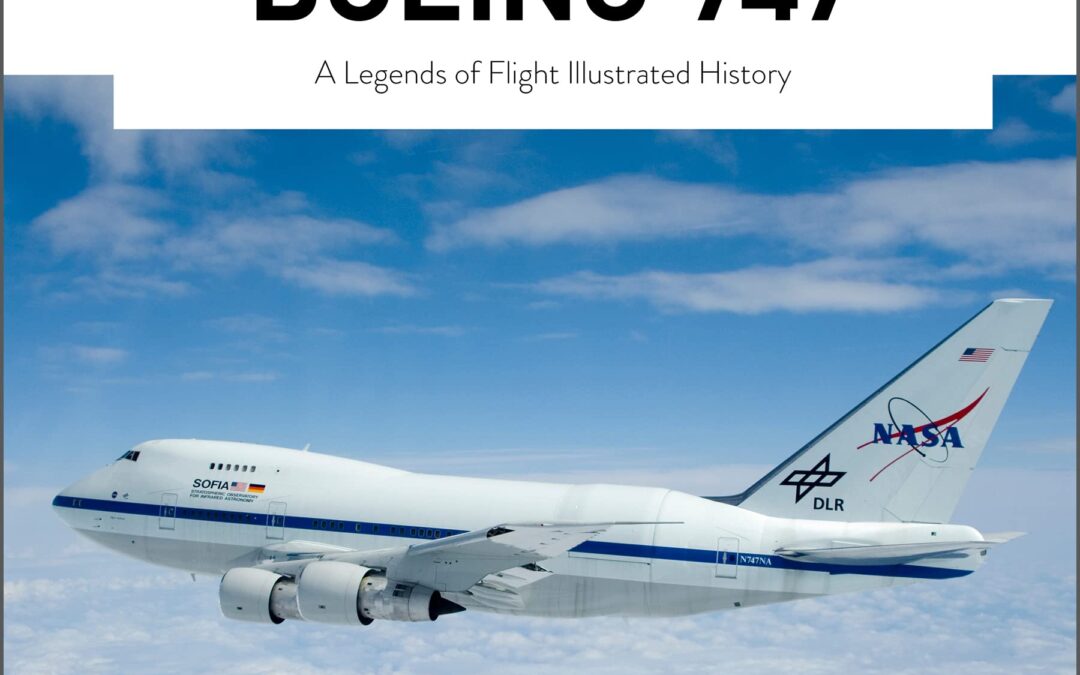
More than half a century ago the Boeing 747 took to the air for the first time; it is considered the first large-capacity civilian airliner. Lovingly nicknamed the “Jumbo Jet,” the aircraft quickly became the flagship of any airline that operated it. While sales were initially modest, the unmistakable four-engine jet became a bestseller after much-improved and more-advanced versions became available in the 1980s. Though recent technological developments have caused the age of the big four-engine passenger jet to slowly come to an end, the elegant 747 is undoubtedly an aviation legend that still turns heads at airports. Sadly, after a 50-year-plus service career, the last 747s are due to come off the factory line in 2022. The history of the 747’s design, development, and operational use is presented in detail in this book, as is its use by many of the world’s most famous airlines, including TWA, Pan Am, Lufthansa, Qantas, British Airways, El Al, Air France, and nearly 100 others throughout its long career. Governments and militaries worldwide have also flown the 747, for missions including ferrying NASA’s former space shuttle fleet, and the current US Air Force One presidential aircraft. Technical specifications for the 747 and its variants, as well as period photographs, bring to life the fascinating history of one of Boeing’s most iconic aircraft.
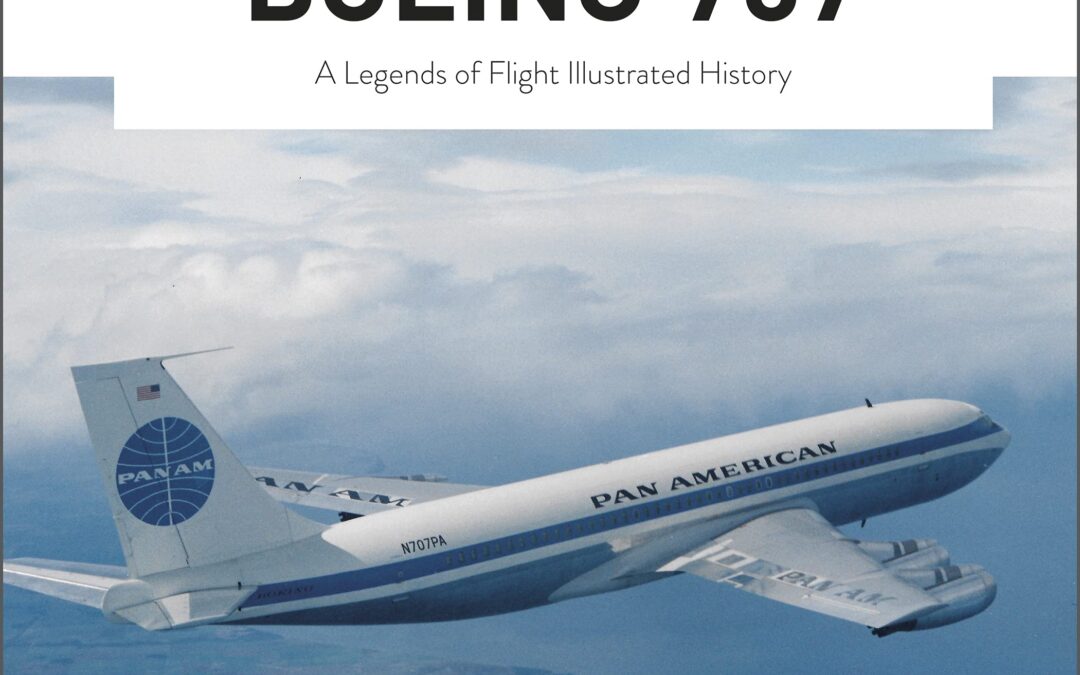
Beginning in the late 1950s, the Boeing 707 revolutionized passenger aviation like almost no other aircraft, as the elegant four-engine aircraft made it possible to serve intercontinental long-haul routes quickly and economically. This volume in the Legends of Flight series examines the history of this classic jet aircraft, whose memorable design has survived to this day, its basic features still recognizable in the Boeing 737. The history of 707 operations is presented in detail, as is the use of the type by various world military forces and governments—and its famed use as the US presidential Air Force One in the 1960s through the 1980s. Its use by many of the world’s most famous airlines, including American, TWA, Pan Am, Northwest, Continental, Air France, British Airways, Lufthansa, Cathay Pacific, and Air India, is also covered. Technical specifications for the 707, the Dash 80 prototype, the Boeing 720 (derived from the 707), the aerial refueler KC-135, and E-3 Sentry, as well as contemporaneous photographs, bring to life the fascinating history of Boeing’s first commercial jetliner
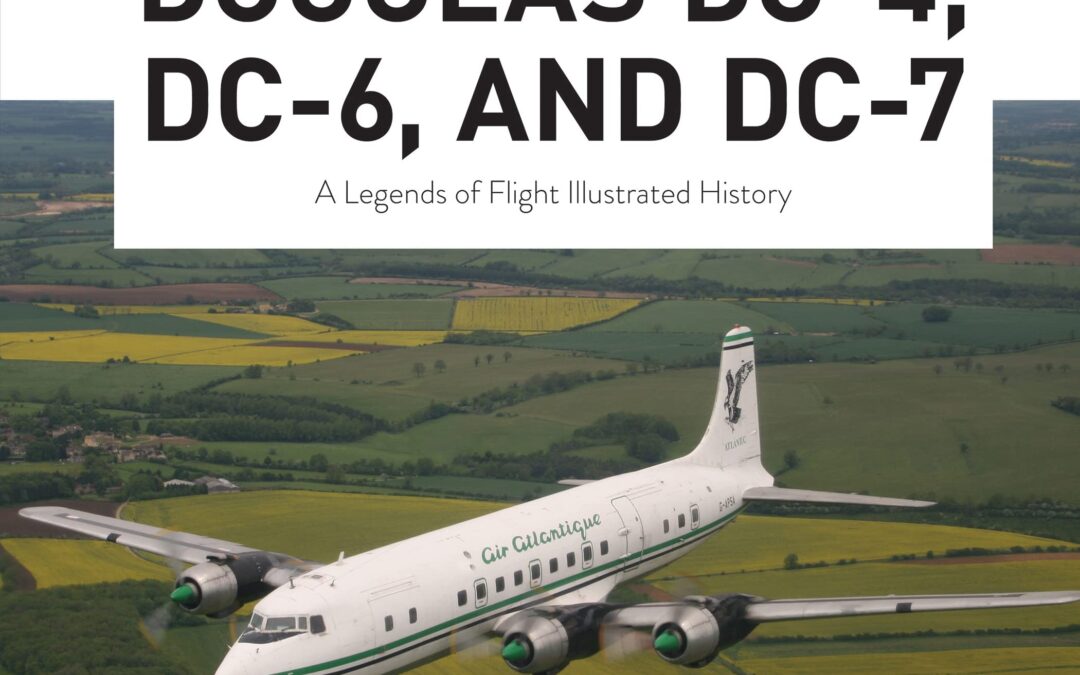
With his hugely successful commercial aircraft, including the legendary DC-3, founder Donald W. Douglas led his company to the forefront of aircraft manufacturers starting in the 1930s. “Depend on Douglas” was the company motto, and the company founder stood behind it with his name. Between 1945 and 1960, the DC-4, DC-6, and DC-7 four-engine “Big Prop” models were flown by many of the world’s most famous commercial airlines of the era, including Pan Am, United, American, Eastern, Delta, KLM, BOAC, Swissair, SAS, Air France, Alitalia, and Japan Air Lines. This is the history of the design, development, and operational use of the Douglas Big Props, including technical specifications and details of military variants. Period photographs bring to life the fascinating history of these early, and influential, commercial airliners, some of which still fly today.
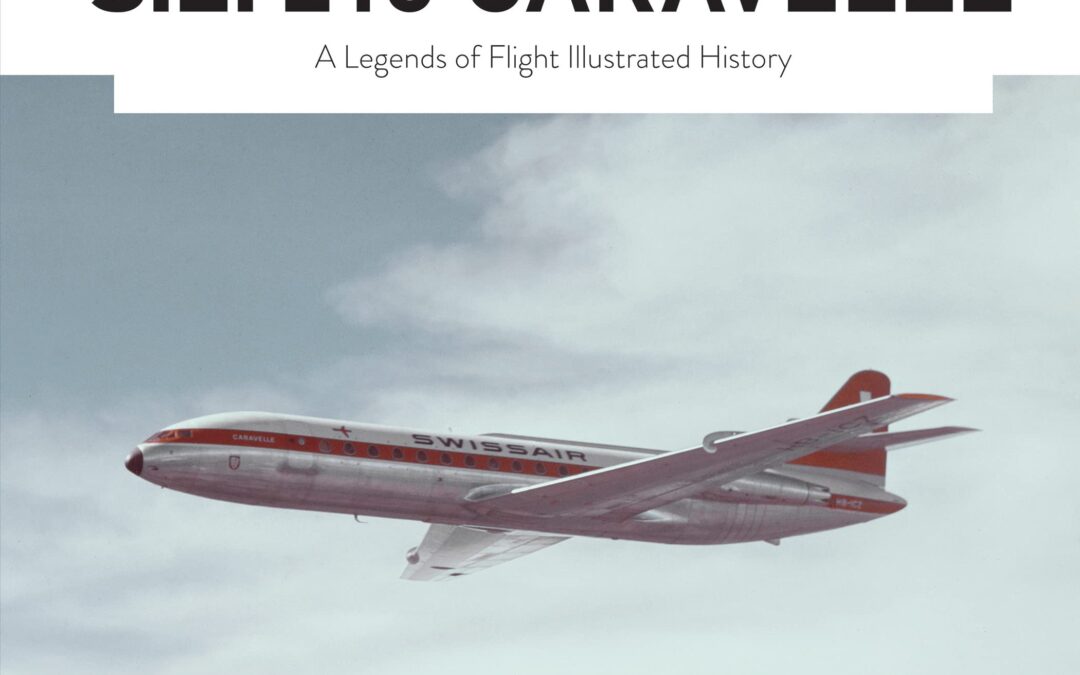
The Sud Aviation S.E. 210 Caravelle was a 1950s-era French-built jet airliner named after the famed 15th-century caravela ships used during the Age of Exploration. Along with the British de Havilland Comet, on which it was partially based, the Caravelle was one of the earliest jet-powered passenger airliners. In April 1959, it became the world’s first successful jet airliner to enter scheduled service, which it did with Scandinavian Air Lines System (SAS). The S.E. 210 remained in production until 1972 and eventually retired in 2005. With its unusual rear-mounted engines, it influenced such later jet airliner designs as the Douglas DC-9 and Tupolev Tu-134. The history of the Caravelle’s design, development, and operational use is presented in detail in this book, as is its use by many of the world’s most famous airlines of the era, including Air France, SAS, Swissair, Finnair, Royal Jordanian, Austrian Airlines (AUA), United, Indian Airlines, and VARIG. Technical specifications for the Caravelle and its variants, as well as period photographs, bring to life the fascinating history of this early, and influential, commercial jet airliner
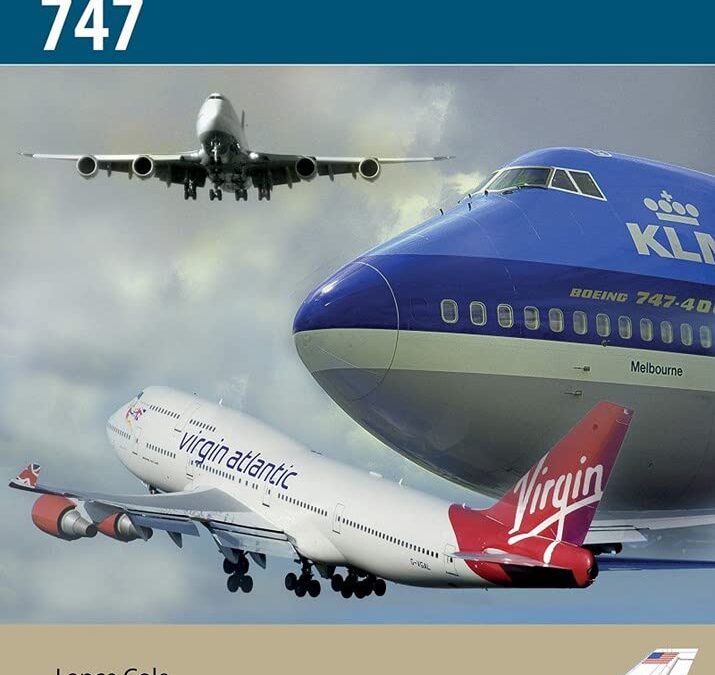
Boeing’s 747 ‘heavy’ has achieved a fifty-year reign of the airways, but now airlines are retiring their fleets as a different type of long-haul airliner emerges. Yet the ultimate development of the 747, the -800 model, will ply the airways for many years to come.
Even as twin-engine airliners increasingly dominate long-haul operations and the story of the four-engine Airbus A380 slows, the world is still a different place thanks to the great gamble that Boeing took with its 747. From early, difficult days designing and proving the world’s biggest-ever airliner, the 747 has grown into a 400-ton leviathan capable of encircling the world. Boeing took a massive billion-dollar gamble and won.
Taking its maiden flight in February 1969, designing and building the 747 was a huge challenge and involved new fields of aerospace technology. Multiple fail-safe systems were designed, and problems developing the engines put the whole programme at risk. Yet the issues were solved and the 747 flew like a dream said pilots – belying its size and sheer scale.
With its distinctive hump and an extended upper-deck allied to airframe, avionics and engine developments, 747 became both a blue-riband airliner and, a mass-economy class travel device. Fitted with ultra-efficient Rolls-Royce engines, 747s became long-haul champions all over the world, notably on Pacific routes. across the Atlantic in January 1970, 747 became the must-have, four-engine, long haul airframe. Japan Airlines, for example, operated over sixty 747s in the world’s biggest 747 fleet.
By the renowned aviation author Lance Cole, this book provides a detailed yet engaging commentary on the design engineering and operating life and times of civil aviation’s greatest sub-sonic achievement.
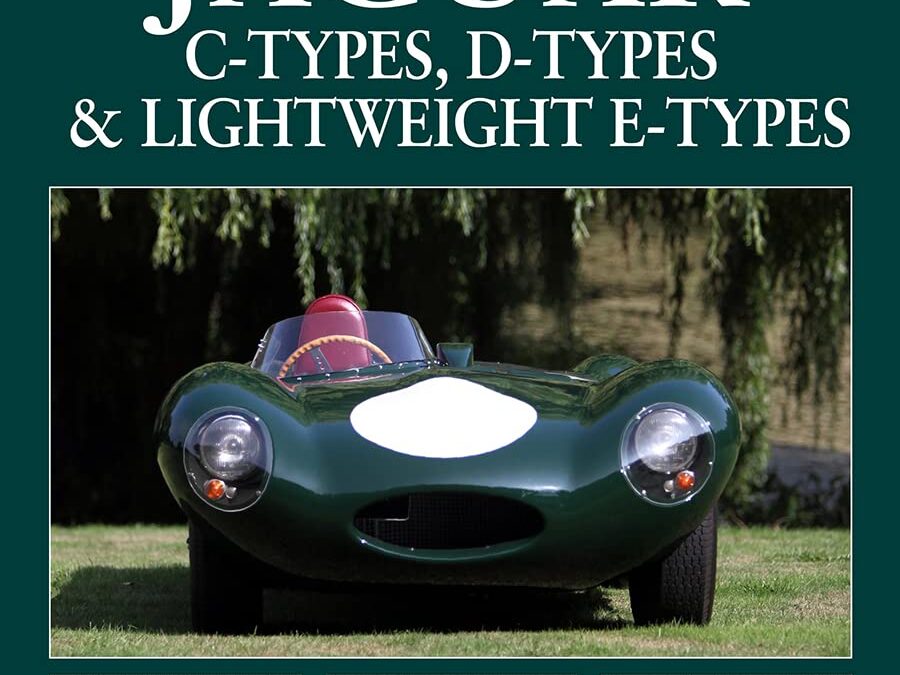
Expanded new edition
The first edition of the present book was published in 2014 and was quickly acclaimed as the bible of the classic Jaguar racers. This greatly expanded new edition runs to more than 400 pages and contains 500 illustrations. It brings the individual stories of over 150 cars up to date, and includes additional useful information and appendices. Today the name of Jaguar still ranks high in the pantheon of British cars that have won the Le Mans 24-hour race. A mere 20 years since the birth of their first car, Jaguar had become the leading high-performance car in Britain thanks to the revolutionary XK engine, and the XK120 was in its day the fastest production car in the world. While the company had begun to earn its spurs in motor racing, it was a bold step to build a new car with the specific intention of entering Le Mans, at the time the most famous motor race in the world. Remarkably, the new Jaguar C-type succeeded in winning at Le Mans on the first attempt. A further four Le Mans victories followed: in 1953 for the C-type again, and then three wins for D-types from 1955 to 1957, by which time the Jaguar works team had been withdrawn from racing. Private entries of Jaguar C- and D-types in other races continued for many years. The E-type was never as successful in racing, since it was conceived as a GT road car rather than a racer, but the small run of lightweight cars and other competition versions added further lustre to Jaguar’s reputation. C- and D-types were sold in some numbers to private owners on both sides of the Atlantic, many of whom obviously used them for racing, but unlike most later sports-racing cars they could still be used on the road. This was and remains one of their many attractions. Virtually all the cars have survived, and in recent times have seen a steady increase in value. This updated, enlarged and comprehensive new edition of the Register is a tribute to these glorious cars, to the people who were involved in their design and production, and to the drivers who campaigned them.
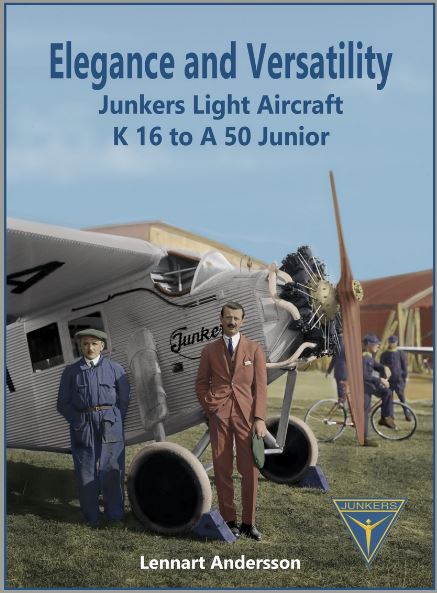
This book is about all the smaller Junkers types that were designed and built during the same period as the more well-known F 13, G 24 and W 33/W 34. The A 20 and A 35/K 53 were produced in great numbers and served in countries all over the world. The majority were of the military version, but the A 20 was also used for pioneering night airmail services.
The two-seat H 21 and the single-seat S 22 fighter were built for the Soviet Union. The K 47 two-seat fighter was sold to China and was used in dive-bombing experiments and the A 50 Junior was intended for the emerging private aircraft owner market. Junkers built substantial numbers of the Junior and they and found buyers in all corners of the world. It became world famous especially for daring long-distance flights made by illustrious aviators, including female pilots.
Contents:
Introduction
For Travellers in Style – The Junkers K 16
Two-Seaters for Private Flying and Training – The Junkers T Series
Civil and Military Use – The Junkers A 20 and Derivatives
Specially Made for the Red Air Fleet – The Junkers J 21 and J 22
Two-seat Fighter and ‘Stuka’ – The Junkers K 47
The Private Aircraft Owners Dream – The Junkers A 50 Junior
Specifications and Performance
Drawings
Sources and Bibliography
Index
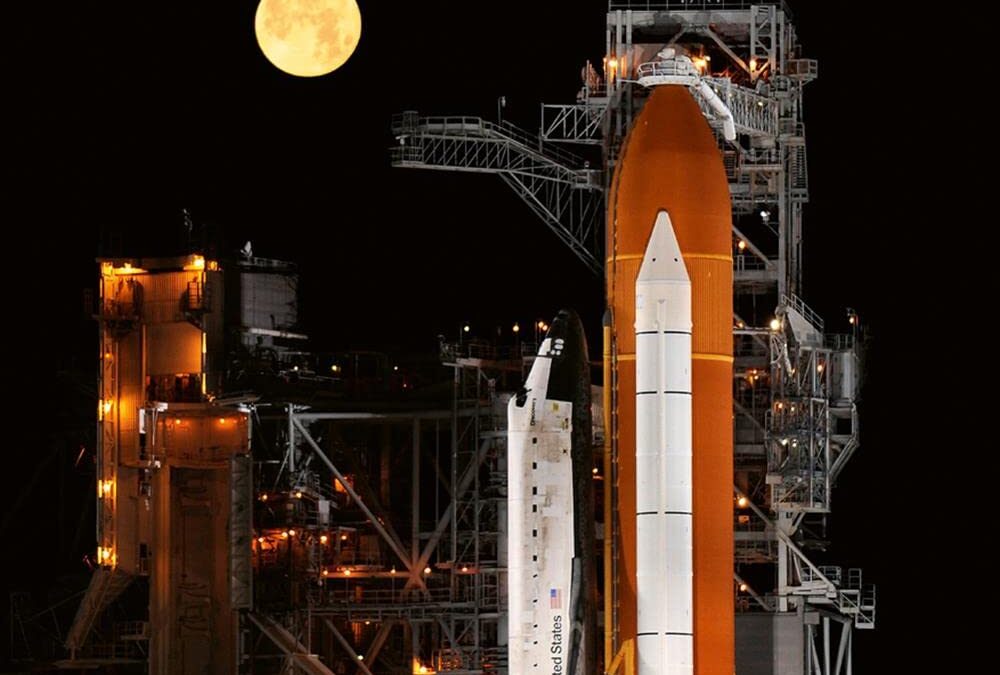
- A stunning coffee table book of historically significant NASA photos
- Amazing photographs complemented by quotes and stories from noted personalities at NASA
- A chronological journey through NASA’s history, from Apollo to the James Webb Telescope
- Awe-inspiring, inspirational and motivational, a perfect gift and a must for your library
- Quotes from astronauts Commander James Lovell and John Glenn, as well as John F Kennedy, Ralph Waldo Emerson and many more
“The history of space exploration is best presented in this book of NASA photographs, whose images are universally inspirational.” – Commander James Lovell, Apollo 13
NASA has worked at the forefront of space exploration and research since 1958. Their devotion to furthering our understanding of what lies beyond our atmosphere has seen 12 humans walk on the surface of the moon, helped form the International Space Station, and placed numerous rovers on Mars. Voyager 1, launched by NASA on 5 September 1977, is the furthest manmade object from earth, having left our solar system entirely – and the agency’s plans for the future are equally inspiring.
This book celebrates NASA throughout the years, from its inception to its 60th anniversary in 2018, and beyond. A visual tour-de-force, the book collects high resolution NASA photos of historic significance; from rarely seen photos and the words of President John F. Kennedy commanding the space race, to the many triumphs and tragedies of the Apollo Missions, moon landings, the International Space Station, space shuttles, journeys to Mars and explorations of our galaxy’s outer reaches. These breathtaking images are complemented by heartfelt words of hopes and imagination for the future, encouraging readers to admire their world from a different perspective. NASA: the Greatest Milestones is a stunning 300 page book.
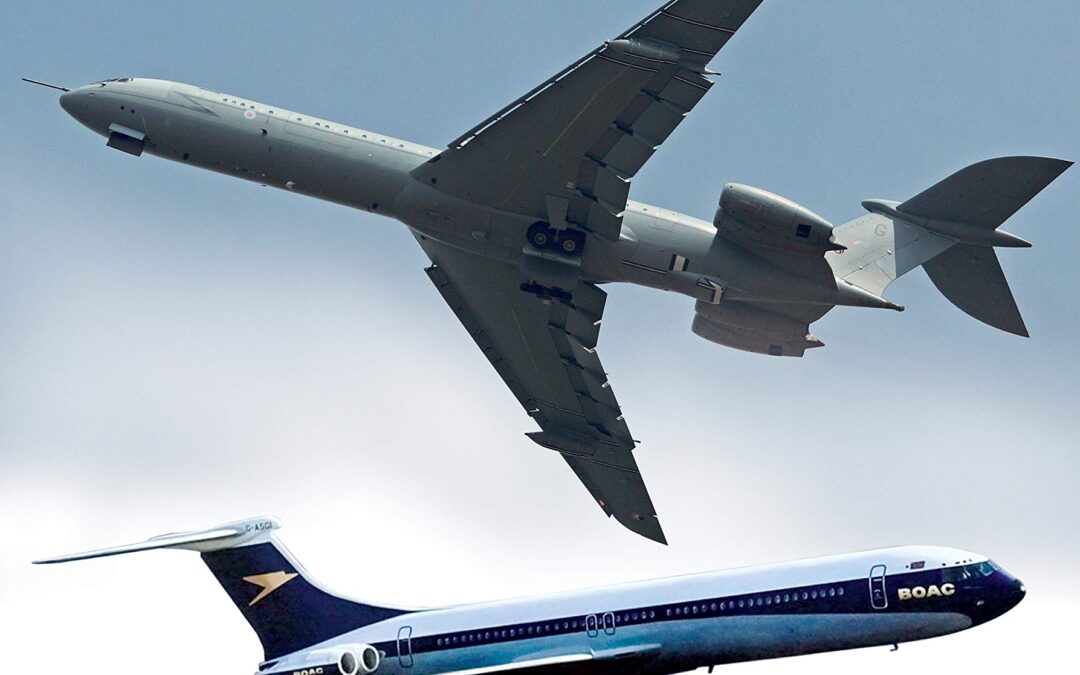
Designed and manufactured by the men who would make Concorde, the Rolls-Royce powered Vickers VC10, and its larger variant, the Super VC10, represented the ultimate in 1960s subsonic airliners. The VC10 was Britain’s answer to the Boeing 707 and the Douglas DC-8.
The VC10 was a second-generation jetliner designed in the 1960s and manufactured into the 1970s. It incorporated advanced engineering, new aerodynamics, and design features, to produce a swept, sculpted machine easily identifiable by its high T-tail design and rear-engine configuration.
The VC10 could take off in a very short distance, climb more steeply and land at slower speed than its rivals the Boeing 707 and Douglas DC-8. These were vital safety benefits in the early years of the jet age. At one stage, the Super VC10 was the biggest airliner made in Europe and the fastest in the world.
On entry into service, both the VC10 and the longer Super VC10 carved out a niche with passengers who enjoyed the speed, silence and elegance of the airliner. Pilots, meanwhile, loved its ease of flying and extra power. Yet the VC10 project was embroiled in political and corporate machinations across many years and more than one government. BOAC got what they asked for but went on to criticize the VC10 for not being a 707 – which was a different beast entirely. Questions were asked in parliament and the whole story was enmeshed in a political and corporate affair that signified the end of British big airliner production. Yet the men who made the VC10 also went on to design and build Concorde. Many VC10 pilots became Concorde pilots.
In service until the 1980s with British Airways, and until 2013 with the RAF, the VC10 became a British icon and a national hero, one only eclipsed by Concorde. It remains an enthusiast’s hero.
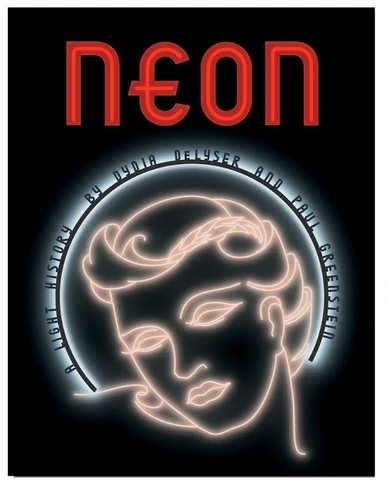
SIGNED
Since the late nineteenth century neon signs have inspired devotion and derision, drawing people to them and transforming the American landscape in the process. In Neon: A Light History Dydia DeLyser and Paul Greenstein unite the approaches of scholar and signmaker in the first book to detail neon’s rich history and geography from the inside. Lavishly illustrated and invitingly designed, this short book’s compellingly written expert analysis dispels long-held myths and misunderstandings about the inventors and technologies, the art and commerce, and the cities and communities that have made neon signs such iconic parts of the American landscape.
Revealing neon signs as active agents in sweeping cultural, economic, and political changes nationwide, DeLyser and Greenstein introduce readers to inventors and “tube benders,” business owners and customers, politicians and passersby, sign detractors and sign afficionados, architects and restoration specialists—a compelling cast of characters, many of whom, they show, continue to keep neon vibrant today. Taking readers inside the signs themselves, the authors show how each sign, whether historic or contemporary, is made by skilled hands—today just as they were over one hundred years ago.
Drawing from over a decade of in-depth archival and ethnographic research as well as more than four decades of experience in the sign industry, DeLyser and Greenstein use Los Angeles—not New York or Las Vegas—as focal point, showing how neon signs have catalyzed urban change, and how they continue to hold appeal for our changing communities—developing with the automobile and car-and-consumer culture in the twentieth century, expanding from cities to towns, and along highways to remote roadside outposts. From the earliest luminous tubing in the 1890s to the artistic creations of today, from community-funded restorations of historic signs to ordinary-seeming business signs that have become community icons, DeLyser and Greenstein show how, just as neon signs lit our past, they can now light our shared future.

Progress on the English Electric Canberra was the main topic of a report written by W E W ‘Teddy’ Petter on June 17, 1948, but a final paragraph headed ‘High Speed Fighter’ said, “Requirements for a high speed fighter are being sent to us…There would probably be two or three prototypes attached to a successful design and a reasonable chance of production orders. Supersonic speeds would be required for short periods.” This marked the beginning of the effort leading to production of the legendary Lightning fighter.
English Electric Lightning: Genesis and Projects examines how that effort evolved – focusing on the procurement process and the factors that drove decisions about the aircraft configuration and its weapon system. In particular, author Tony Wilson looks at how other procurement programs influenced choices about the Lightning for good or ill.
Between English Electric project numbers P1 and P34 there were 15 project numbers between P1 and P34 associated with the Lightning. Some refer to development steps in the aircraft’s core program but others were studies to extend the aircraft’s capabilities. These designs are explored too along with proposed developments that were never given ‘P’ numbers.

“Every Coupé from Mercedes-Benz has always embodied elegance on four wheels, whether today, 40 years ago or a century ago; our coupés are legends of each and every era in which they were built.” – Michael Bock, Head of Mercedes-Benz Classic
In the very beginning, the automotive industry was dominated by open-top vehicles whose body shapes were very much based on the horse-drawn carriage, there were open and closed carriages and then there was the Coupé. Mercedes-Benz is and has always been a trendsetter, not only in terms of technology, but also in design but what must never be underestimated was the idea of moving away from the ‘classic Coupé saloon style body but also what had become their corporate identity, the Mercedes-Benz, radiator grill.
With over 300 photographs and illustrations, this first volume of the Mercedes-Benz Coupe includes an overview of the early days of ‘Sports-Car’ design and the influences of aerodynamics on design evolution. The book discusses the early protagonists at Daimler-Benz and how they influenced design of the Coupe shape. It shows how the Racing Coupe influenced what became the production Sport Coupe, and covers the experimental and one-off prototypes and the continuation of the Super Sport Light concept through the ‘S-Class’ range.
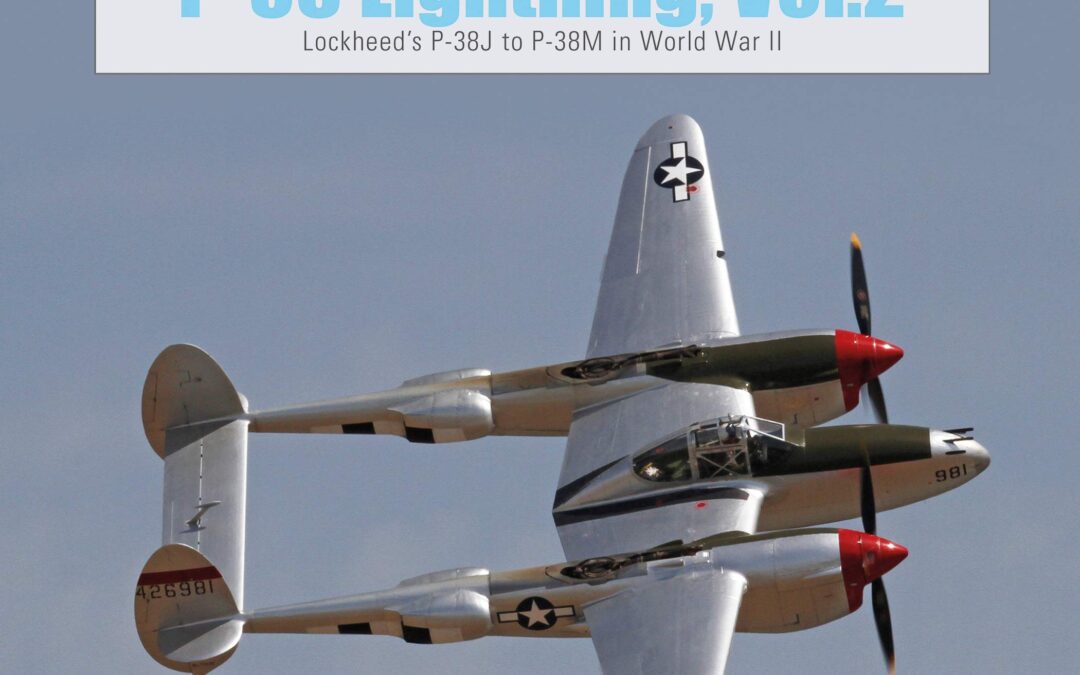
This second of two volumes continues the P-38 story by focusing on the later, mass-produced models of this historic fighter—P-38J through P-38M. Each type is examined through carefully researched archival photos, as well as photographs of currently preserved examples. Known to the enemy during World War II as the “Fork-tailed devil,” the pilots of the Lockheed P-38 Lightning were charged with the responsibility of escorting American bombers deep over heavily defended Europe during the early years of the air campaign against Nazi Germany. In the Pacific, the Lightning’s long range was put to good use flying over vast expanses of ocean. Detailed text and captions illustrate not only the design and construction of the later-war Lightnings, but also their combat use in WWII. Large, clear photos, coupled with descriptive and informative captions, put the reader on the airfield and in the sky with this historic aircraft.
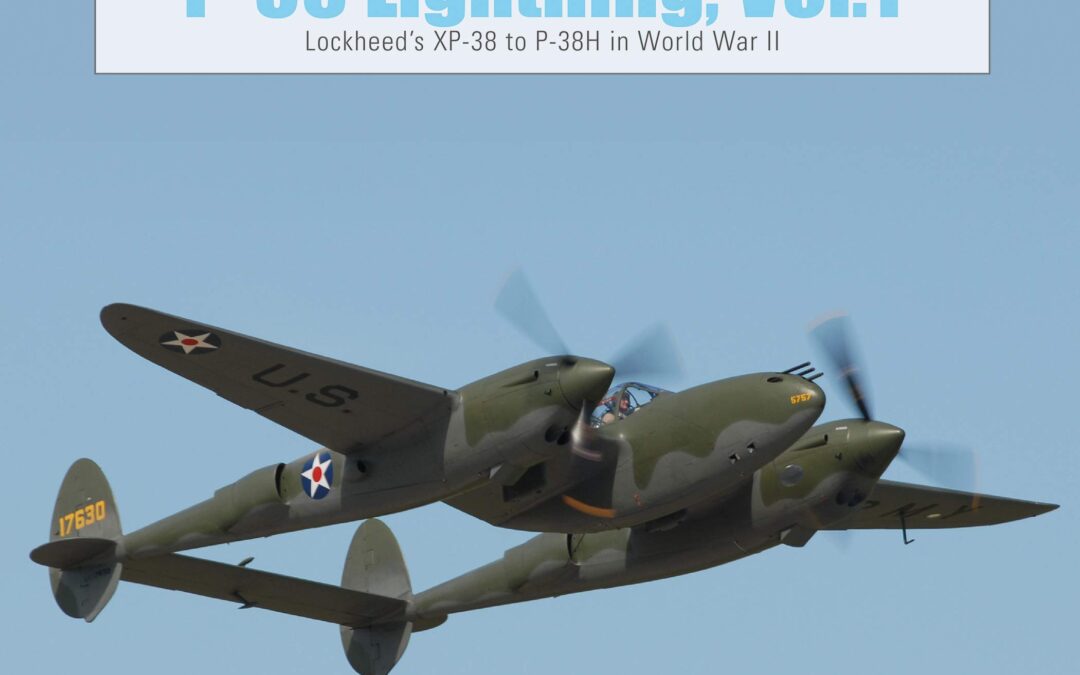
This first of two volumes presents the P-38 story by focusing on the early models of this historic fighter—XP-38 through P-38H. Each type is examined through carefully researched archival photos, as well as photographs of currently preserved examples. Known to the enemy during World War II as the “Fork-tailed devil,” the Lockheed P-38 Lightning was piloted by those who were charged with the responsibility of escorting American bombers deep over heavily defended Europe during the early years of the air campaign against Nazi Germany. Detailed text and captions illustrate not only the design and construction of the early-war Lightnings, but also their combat use in WWII. Large, clear photos, coupled with descriptive and informative captions, put the reader on the airfield and in the sky with this historic aircraft. Part of the Legends of Warfare series.
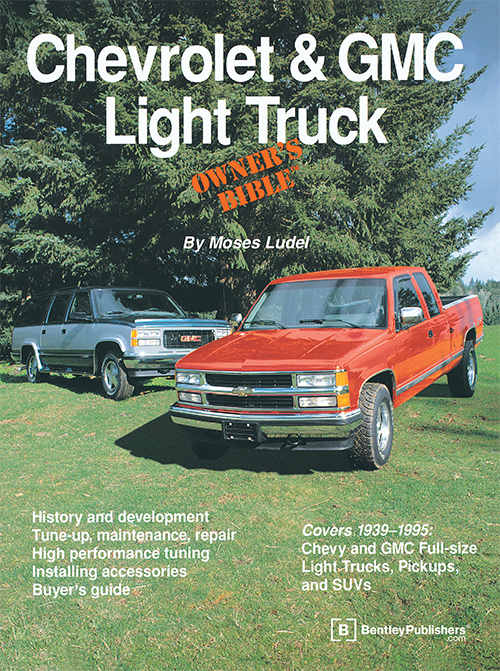
Chevy and GMC Light Truck Models: 1939 – 1995
- Blazer
- C/K to one ton capacity
- Carryall
|
- Full-Size to one ton capacity
- Jimmy
- Sierra C/K to 3500 Series
|
|
A Hands-on Guide to Getting the Most From Your Chevrolet or GMC.
Moses relates the history of Chevrolet’s engineering and technology advancements in the pickup and provides buyer’s guide tips for both new and used trucks. In-depth preventive maintenance and tuning information covers General Motors engines from the classic Stovebolt and Jimmy sixes through the modern TBI V-8s. There’s also a special section that explains how to build a 383 “stroker” small-block V-8 for maximum trailer pulling and off-road power.
These engine modification steps are supported with procedures for upgrading the popular 700R-4 automatic overdrive transmission and manual transmission gear assemblies. Suspension modifications and lift kits are also covered.
If you own a Chevrolet or GMC Light Truck, look no further-this is the essential book for maintaining, modifying and enjoying your truck.






















